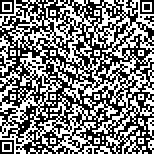| 摘要: |
| 本文基于2016年MODIS (Moderate Resolution Imaging Spectroradiometer)-Aqua、MODIS-Terra和VⅡRS (Visible Infrared Imager Radiometer Suite)三种红外辐射计的海表面温度(Sea Surface Temperature,SST)数据,统计了北极地区红外SST 1月和7月的覆盖率及有效覆盖天数,并与Argo (Array for Real-time Geostrophic Oceanography)浮标数据进行了匹配验证,直观获取北极SST误差分布情况并研究SST遥感观测能力,为更好地了解北极地区从而应对气候变化提供一定的资料基础。结果表明,北极地区红外辐射计SST数据7月的覆盖率和有效观测天数均高于1月,1月三种数据相差不大,7月VⅡRS的覆盖率和有效观测天数均优于MODIS-Aqua和MODIS-Terra,联合三种红外辐射计的覆盖率和有效观测天数相较于单星有所增加,1月覆盖率最高为8%,7月最高接近70%,表明多星联合探测是提高北极地区SST数据覆盖率和观测天数的有效方法;北极地区SST数据的误差普遍高于全球总体水平,VⅡRS白天、夜间的均方根误差(Erms)均低于MODIS-Aqua和MODIS-Terra,MODIS-Aqua白天SST的Erms高于MODIS-Terra,夜间则低于MODIS-Terra。综合来看,VⅡRS在北极的覆盖率、有效观测天数及与浮标的匹配结果在三种红外辐射计中为最优。 |
| 关键词: 北极 红外辐射计 海表温度 Argo数据 |
| DOI:10.11759/hykx20180607001 |
| 分类号:P731 |
| 基金项目:国家重点研发计划项目(2018YFC1407202,2016YFA0600102);东印度洋IND-YGST04区块海洋环境参数遥感调查Ⅱ期项目(GASI-02-IND-YGST2-04) |
|
| Comparative analysis of Arctic sea surface temperature data based on spaceborne infrared radiometer |
|
ZHANG Jing-ying1, SUN Wei-fu2, ZHANG Jie2, MENG Jun-min2, MA Yi2
|
|
1.College of Geomatics, Shandong University of Science and Technology, Qingdao 266590, China;2.First Institute of Oceanography, Ministry of Natural Resources, Qingdao 266061, China
|
| Abstract: |
| In this study, the infrared sea surface temperature (SST) data of MODIS-Aqua, MODIS-Terra, and VⅡRS in 2016 are used to investigate the SST remote sensing observation capability in the Arctic, including the statistics of infrared SST coverage and effective cover days in January and July, and analyze the accuracy of SST data with Argo. Therefore, the distribution of the Arctic SST error can be obtained intuitively and the SST remote sensing observation capability can be investigated to provide a basis for better understanding of the Arctic region, thus coping with climate change. The results show that the coverage and effective observation days of infrared radiometer SST data in July are higher than those in January, the three sets of infrared SST data did not exhibit a significant difference in January, and the coverage and effective observation days of VⅡRS in July are better than those of MODIS-Aqua and MODIS-Terra. The coverage and effective observation days detected by three infrared radiometers are higher than those by a single star. The coverage rate is up to 8% in January and close to 70% in July, indicating that combining different star detection schemes is an efficient method to improve the coverage and effective cover days of SST data in the Arctic. The error of SST data in the Arctic region is generally higher than the global overall level. The Erms value of VⅡRS is lower than those of MODIS-Aqua and MODIS-Terra during the daytime and nighttime. On the contrary, the Erms value of MODIS-Aqua during the daytime is higher than that of MODIS-Terra and the Erms value of MODIS-Aqua during the nighttime is lower than that of MODIS Terra. Taken together, the coverage, effective observation days, and matching results with Argo of VⅡRS in the Arctic are the optimal among the three infrared radiometers. |
| Key words: Arctic infrared radiometer sea surface temperature Argo data |
